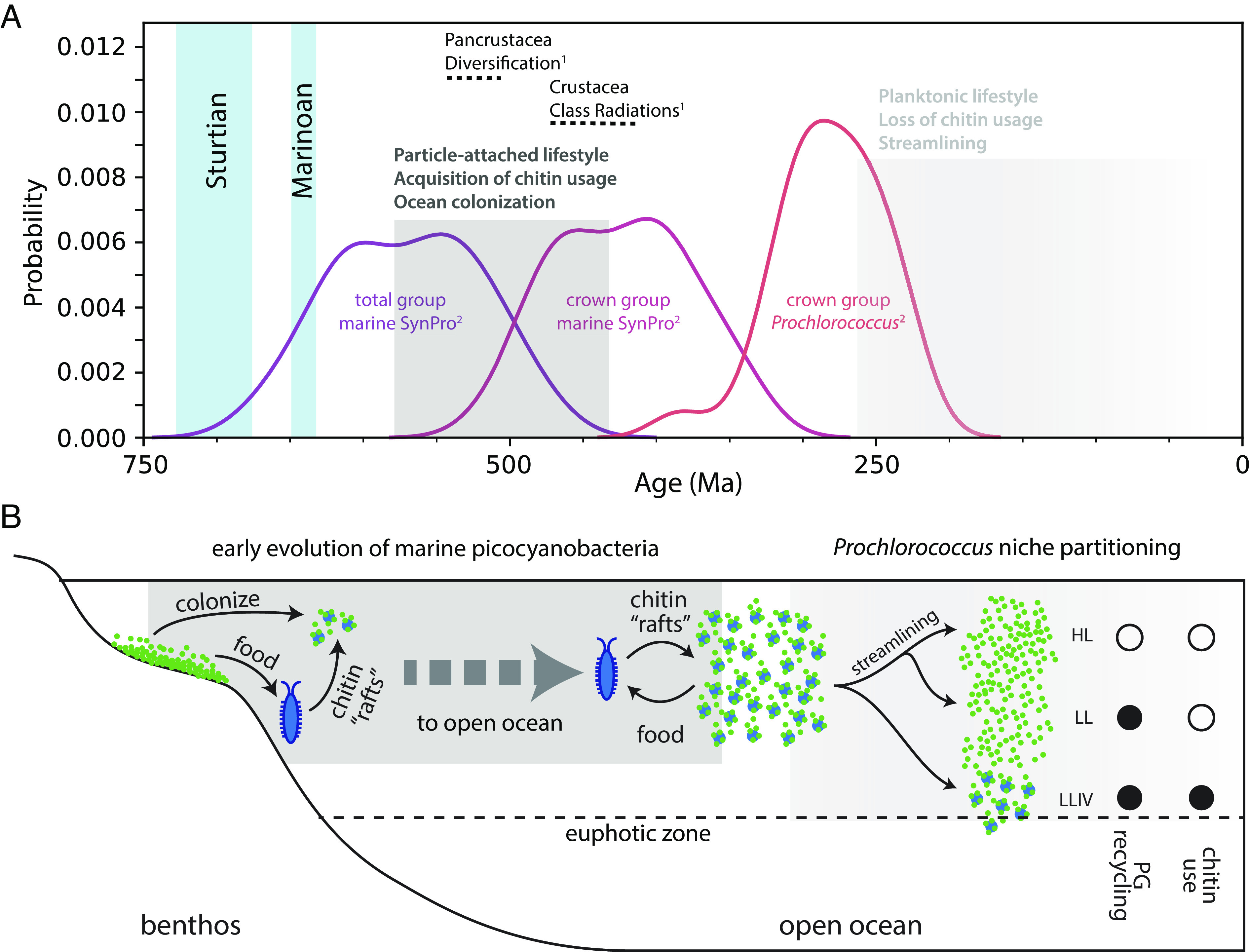Fig. 7.

Hypothesized timing and ecological context of the rise of marine picocyanobacteria. (A) Summary of divergence time estimates for the evolution of 1) arthropods (30) and 2) marine picocyanobacteria (29), which we postulate are linked via chitin utilization metabolism. “Total group marine SynPro” refers to the point of divergence of marine SynPro from other nonmarine picocyanobacteria, which constitutes the older-bound on the acquisition of chitinase genes. “Crown-group marine SynPro” refers to the last common ancestor of extant marine SynPro lineages, which constitutes the younger bound on the acquisition of chitinase genes. Vertical blue bars represent the snowball Earth intervals preceding the rise of marine picocyanobacteria. Gray boxes in B indicate the timeline in which events illustrated in C occurred. (B) The “chitin-raft hypothesis” for the rise of marine picocyanobacteria as outlined in the main text. Chitinaceous waste of marine arthropods provided a substrate in the pelagic environment that benthic cyanobacteria could colonize while preserving their surface-attached lifestyle. The chitin utilization trait was later lost in most Prochlorococcus lineages, but preserved in the LLIV clade of Prochlorococcus, giving cells access to a supplemental carbon source under the low light conditions at the bottom of the euphotic zone.
